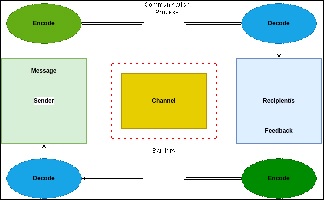The Impact of Medical Jargon on the Daily Communication of Medical Science Students
Keywords:
Medical jargon language, daily communication, medical science students, perceptions and feelings, use of specialized terminologyAbstract
This study seeks to analyze the impact of medical jargon on the daily communication practices of medical science students. It recognizes medical jargon as the main aspect of both identity and communication within the medical field. By delving into the routine use of specialized terminology, the research aims to uncover how this linguistic practice shapes the effectiveness of communication among students. The study adopts a qualitative methodology, employing interviews with students and scrutinizing the content of their discussions to gauge their perceptions and sentiments regarding the utilization of medical jargon. Through meticulous data analysis, the study intends to elucidate the experiences of students and the extent to which the use of jargon influences their everyday communication. This study aims to shed light on how medical jargon shapes communication among medical students, both as a tool for professional identity and as a potential barrier to clear conversations. By exploring students’ everyday use of specialized terminology, the research uncovers the ways jargon influences their interactions. Beyond understanding this dynamic, the study offers practical insights that could help refine communication training in medical education. Unlike previous research, which often focuses on jargon in doctor-patient settings, this study highlights its impact within student interactions—an area that has received little attention. These findings could inspire improvements in medical training programs, helping future healthcare professionals communicate more effectively while maintaining the precision of their field.
References
Smith, A., Johnson, B., & Lee, C., “The Role of Medical Jargon in Medical Education,” Journal of Medical Science Research and Practice, Vol.10, Issue.3, pp.45-53, 2022.
Brown, D., & White, E., “Prevalence of Medical Jargon in Medical Education: A Statistical Overview,” Journal of Medical Science Research and Practice, Vol.11, Issue.1, pp.30-37, 2023.
Shannon, C. E., & Weaver, W., The Mathematical Theory of Communication, University of Illinois Press, pp.1-150, 1949.
Chichirez, S., & Purcãrea, V., Interpersonal Communication in Healthcare, 2018.
Teutsch, J., Patient-Doctor Communication, Springer, pp.100-120, 2003.
O'Halloran, R., Hickson, D., & Worrall, L., Communication in Medical Practice, Elsevier, pp.250-270, 2008.
Gawande, A., “Complications: A Surgeon's Notes on an Imperfect Science,” Harvard University Press, pp.1-5, 2002.
Riess, H., “Empathy in Medicine—A Neurobiological Perspective,” JAMA, Vol.314, Issue 5, pp.523-524, 2015.
Fagerlin, A., Zikmund-Fisher, B. J., Ubel, P. A., Jankovic, A., Derry, H. A., & Smith, D. M., “Measuring Numeracy without a Math Test: Development of the Subjective Numeracy Scale,” Medical Decision Making, Vol.27, Issue.5, pp.672-680, 2007.

Downloads
Published
How to Cite
Issue
Section
License

This work is licensed under a Creative Commons Attribution 4.0 International License.
Authors contributing to this journal agree to publish their articles under the Creative Commons Attribution 4.0 International License, allowing third parties to share their work (copy, distribute, transmit) and to adapt it, under the condition that the authors are given credit and that in the event of reuse or distribution, the terms of this license are made clear.





